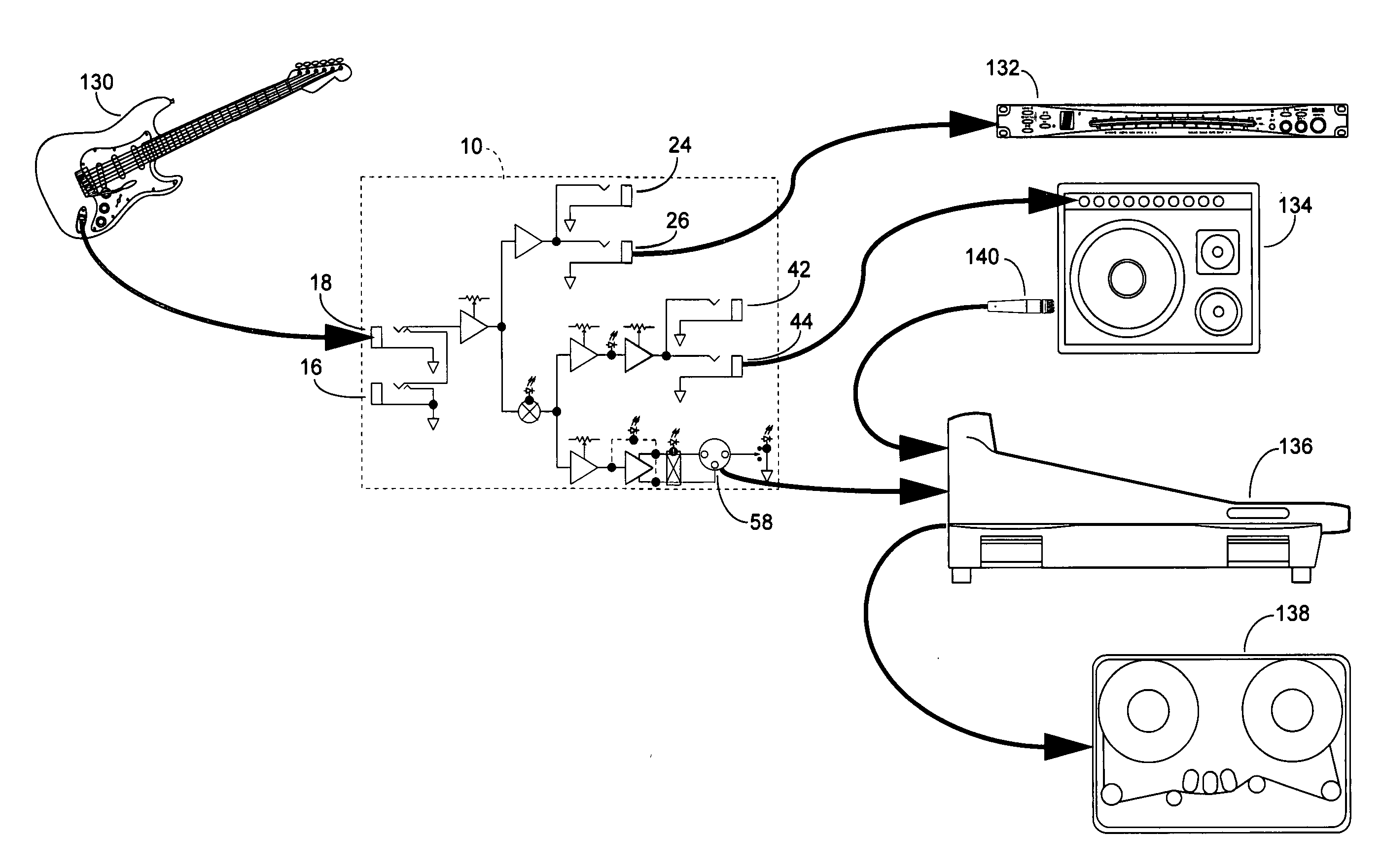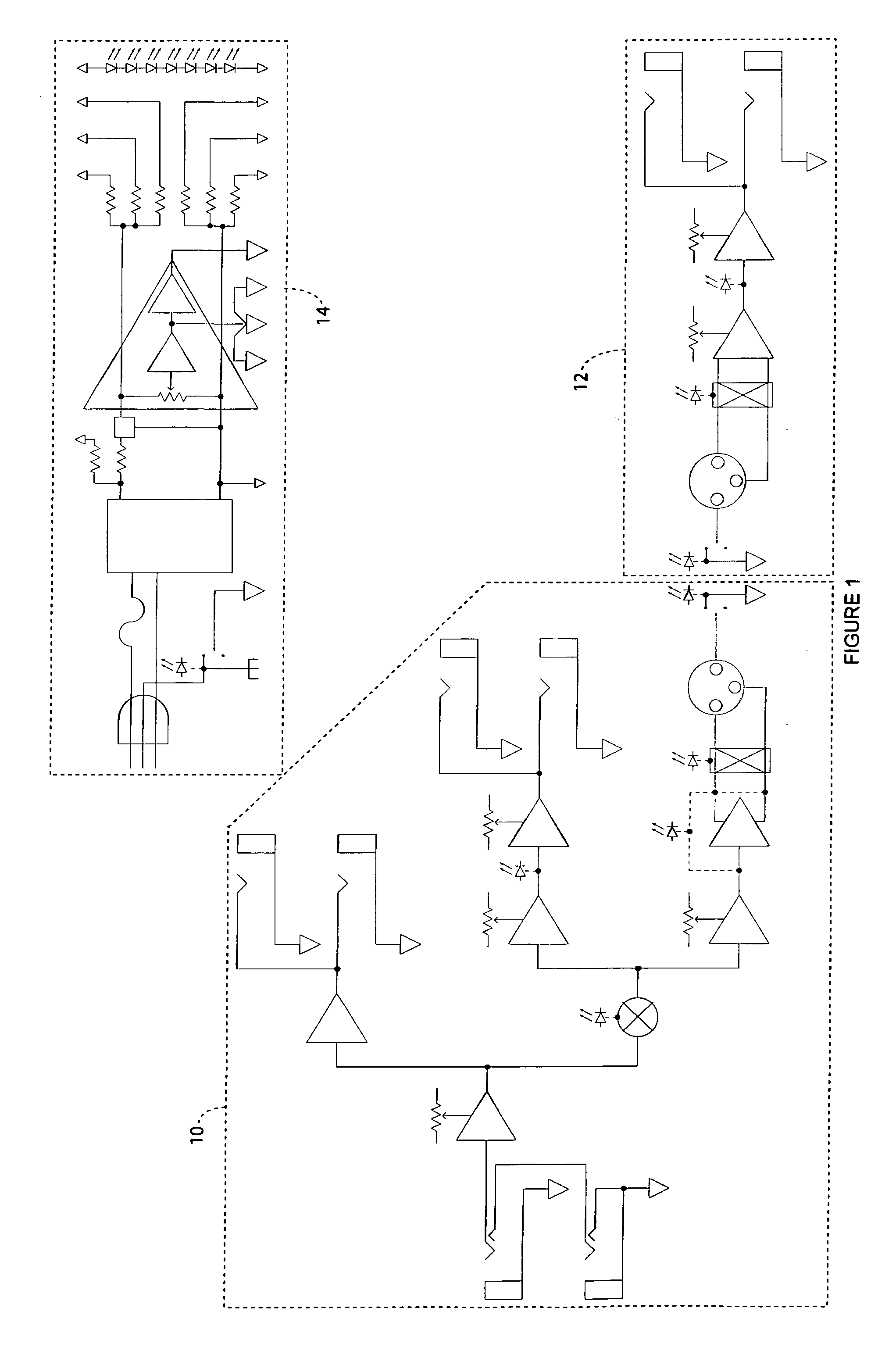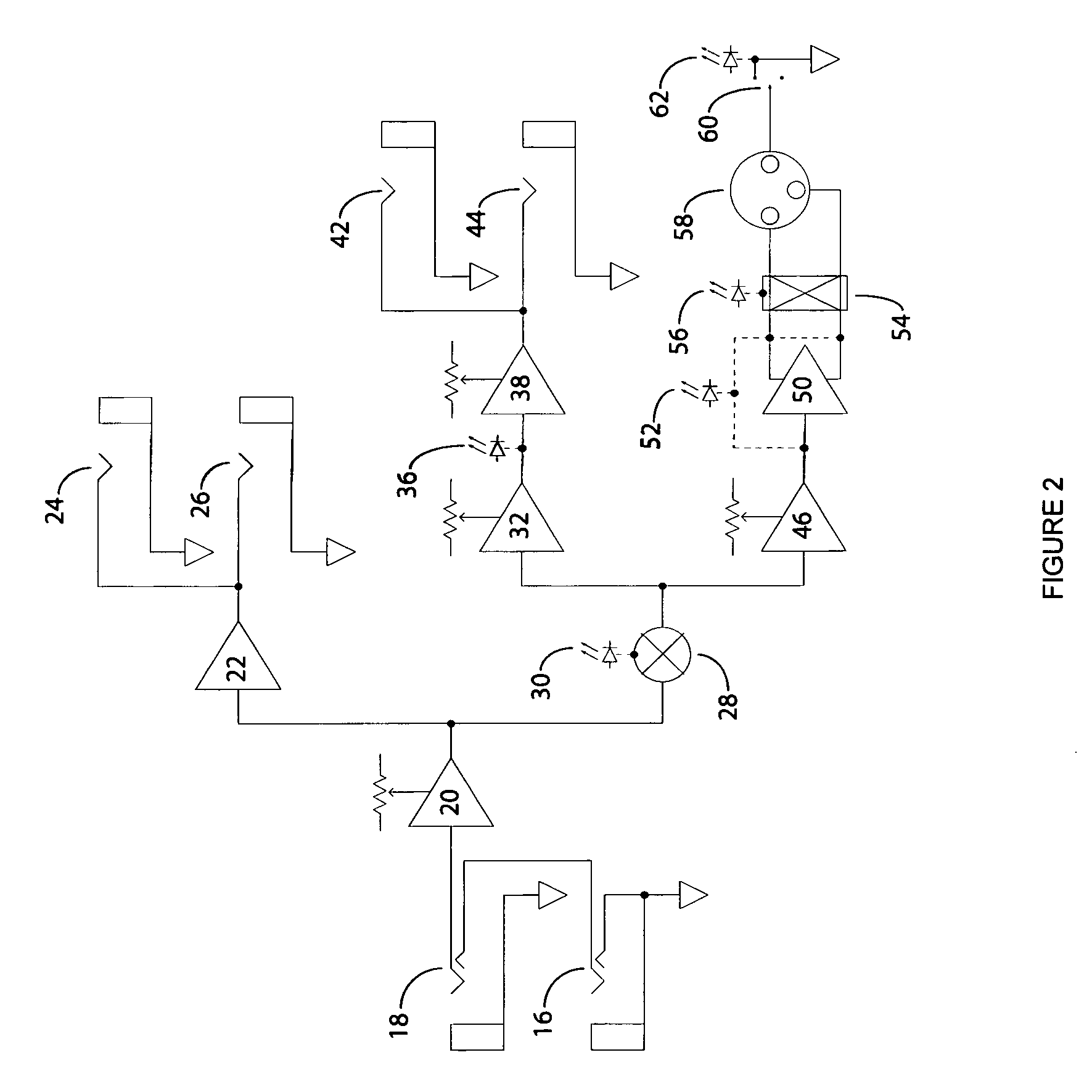Bidirectional, variable-impedance instrument-level to professional-level audio interface with signal splitters and balanced DC power
a signal splitter and variable-impedance technology, applied in the direction of instruments, transducer details, electrophonic musical instruments, etc., can solve the problems of loss and degradation of original signals, difficult to split original signals without affecting their quality, and undesirable side effects of signal splitting devices
- Summary
- Abstract
- Description
- Claims
- Application Information
AI Technical Summary
Problems solved by technology
Method used
Image
Examples
embodiment
Preferred Embodiment
FIGS. 5, 6, 7, 8
[0112]With reference to FIG. 5, a typical connection diagram for a recording session is shown. An electric musical instrument such as an electric guitar 130 is connected to either instrument-level input 16 or 18. Various instrument-level devices may be connected to any of the instrument-level outputs 24, 26, 42, and 44. For example a chromatic tuner 132 may be connected to either of the pre-mute outputs 24 or 26 and an electric guitar amplifier 134 may be connected to either of the post-mute outputs 42 or 44 such that the user may mute the sound while the instrument is being tuned. A professional audio recording system such as an audio recording console 136 and a recording device 138 would be connected to the professional-level audio output 58.
[0113]This way the original audio signal of the instrument may be recorded in its purest form without adding the sound characteristics of the musician's choice of amplifier, however, the musician can hear th...
PUM
 Login to View More
Login to View More Abstract
Description
Claims
Application Information
 Login to View More
Login to View More - R&D
- Intellectual Property
- Life Sciences
- Materials
- Tech Scout
- Unparalleled Data Quality
- Higher Quality Content
- 60% Fewer Hallucinations
Browse by: Latest US Patents, China's latest patents, Technical Efficacy Thesaurus, Application Domain, Technology Topic, Popular Technical Reports.
© 2025 PatSnap. All rights reserved.Legal|Privacy policy|Modern Slavery Act Transparency Statement|Sitemap|About US| Contact US: help@patsnap.com



